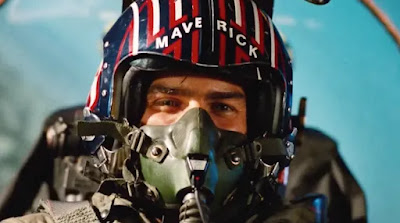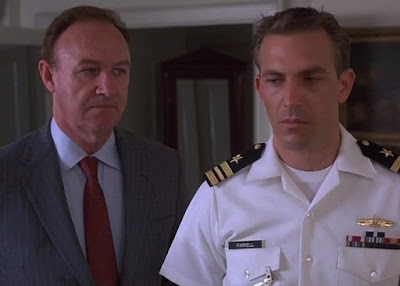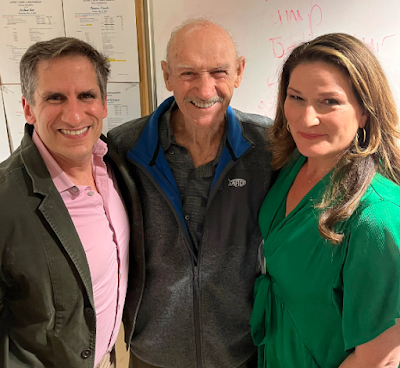When asked to describe what inspired her Pulitzer Prize winning play “The Flick,” Annie Baker cited the “cleaning dance” of theater employees during the closing credits, riffing as they swept up spilled popcorn. “(I)t felt like a little piece of live theater after (the movie) ended,” Baker explained. I wish anything so dreamy had inspired my going to work at the Cobblestone 9 Cinemas in Urbandale, Iowa in the fall of 1996. Yes, I loved movies and knew that such a job would give me free access to new releases all over town, but really, as a recent high school graduate taking a year off for no other reason than I didn’t want to be at school for a while after 12 years in a row of going, I just needed a job and landing one at the biggest, busiest multiplex in central Iowa was a cinch. I was issued a maroon vest and black pre-tied bowtie with nary an interview question other than “when can you start?” My first shift coincided with a sneak preview of “The First Wives Club,” a nominally casual weekday evening giving way to concession stand chaos. I seem to remember nacho cheese splattered everywhere. The girl who trained me lamented that had this been her first night, she would have quit. As it happened, in a couple years I would see Tori Amos with that same girl. That’s not to say we dated (her boyfriend went with us to the show) but to illustrate how I not only didn’t quit but unwittingly found a community, forging friendships that have stood the test of time, the only job, at least for a while there, I can honestly say I loved without reservations.
The Cobblestone 9 opened on December 15, 1994 into a strange interregnum. Though it was a few years after the single screen Capri had closed elsewhere in the Des Moines area, underlining the industry’s ongoing transition to cineplex sprawl, the Cobblestone was also constructed with flat floor seating about five minutes before the business begin transitioning to stadium seats, meaning it was destined to become a white elephant when the curiously named Wynnsong 16 opened just down the road but four years later. Still, for that small window in the mid-90s, the Cobblestone was the biggest game in town, as likely to be showing the newest blockbuster as wedging the latest David Lynch or Neil Jordan joint into one of the smaller theaters that were more like “rooms,” to quote Elaine Benes bemoaning the Paradise Twin, “where they bring in POWs to show them propaganda films.” The theater itself was designed in familiar economical hotel atrium would-be chic with light burgundy carpet that already seemed to be fading when it was installed, faux plush couches alongside cardboard standees and poster cases of coming attractions that hearkened the changing movie seasons while also dividing the two concession stands on either side of the foyer that led to a five-step staircase beckoning customers toward the rudimentary maze of theaters in back. A cheesy neon sign that simply said The Movies affixed above this ascending passageway rendered moviegoing goofily glorious long before Nicole Kidman’s AMC ad became a meme.
 |
| Me, at a movie at the Cobblestone 9 circa 1997. |
Because I was on a gap year, I frequently worked weekday afternoon shifts, when the theater was minimally staffed. The ornery retiree cum usher referred to the rope stanchions he put up once all the shows commenced as his “fences,” meant to enclose any rowdy kids. The box office cashier liked Black Flag and after a few months gave me the skinny on how to skim a few bucks here and there by reusing torn tickets. Annie Baker called this scheme “dinner money” in “The Flick” and after we saw it, My Beautiful, Perspicacious Wife wondered if the Cobblestone had dinner money too. I confirmed we did but that my rule-abiding Midwestern nature (and this is true, even with the statute of limitations since passed) refused to let me partake. Like dinner money comes back to bite the characters in “The Flick,” I’m pretty sure I remember dinner money getting that guy too. Is that considered punk?
If weekday Cobblestone’s air was akin to a drowsy townie bar then evening and weekend Cobblestone came alive, especially in the summer when so many of the college kids who worked there the year before returned and a whole new class of workers signed up. Each night was a virtual carnival of antics and inside jokes, none of which subsided when the lines stretched out the door but gave us strength to work even faster. I tend to romanticize things, yes, and it’s illogical to suggest such a low wage job is in and of itself fun, true, but that summer, the summer of 1997, we made it fun, dancing to Will Smith’s “Men in Black” as we cleaned the theater after each one of its seemingly endless shows, making Baker’s “cleaning dance,” I realize all these years later, come literally true. Some evening I wandered out of the backroom of the concession stand with the just-cleaned buttery bowl on my head at the precise moment the head manager was seeking me out. He cleared his throat, though that was a recurring tic more than non-verbal admonishment, and smiled a knowing smile, no doubt noticing that I blushed while immediately removing my improvised helmet. He then just told me what he was going to tell me, admirably willing to let me and everyone else have a good time so long as the job got done.
In essence my job entailed violating the Lloyd Dobler rule of employment; I was selling something for (an approximation of) a living. It wasn’t that I believed in these products, the popcorn and soda and candy, but that these products went hand in hand with that product – the movies – and those I believed in. Not the movies themselves, per se, though a lot of them I did, but the physical act of going to them. Maybe you were seeing “Michael” starring John Travolta, but patron, when I said, “Enjoy your show,” I swear on Lauren Bacall’s beret in “The Big Sleep,” I meant it every time.
Best of all were employee-only sneaks when a gaggle of us would stay after our shift and watch a late-night screening of some new release not yet available to the public. These screenings, they were not for the faint of the heart. If normal society dictates silence during a movie, employee sneak society dictates group chatter, mob rule running commentaries, get used to it or get out. At the “Event Horizon” sneak, after the horrifying reveal, when Laurence Fishburne deadpans “We’re leaving,” the roar that went up was like a college football game, and even now, in the distant twilight of 2022, I can see the girl every idiot male had a crush on flashing the devil’s horns down front. I’m pretty sure that was the last sneak I saw that summer. It was mid-August and my date with destiny at the University of Iowa was looming. Somewhere in that last week or two, a bunch of us with the night off took part in some hastily imagined scavenger hunt across Des Moines. I remember nothing about it. What I remember was sitting outside the Cobblestone later, along the slight embankment that in true West Des Moines fashion led from one shopping center to another, everybody talking, gazing into the concrete parking lot as if it were a lake. That’s when it hit me; I’d never gone to camp, but Cobblestone 9 in the summer of 1997 had become mine, my Eagle River.
For a lot of people, that summer was their last at Cobblestone. At some point, I bumped into one of my fellow concessionists in my U of I dormitory. We exchanged information but never hung out. I don’t think he was avoiding me, but I also don’t think he was going out of his way to find me. I remember being terribly sad about it, though I also think he was away at college and remaking his life, and sometimes that means leaving any remnants of your vest and bowtie behind. I never saw him again. When I eventually dropped out of school, I went back to work at the theater and advanced from concessionist to usher to cashier to projectionist to manager, going from the Cobblestone to the Wynnsong along the way. My original joyful spirit eroded a little more with each promotion, the completely contradictory but totally natural false progression of gainful employment. I’ve always tended to maintain occupations a little too long, whether from fear of the rigmarole in finding another one or my innate Gen X attitude that all jobs quite frankly suck so what does it really matter.
My last summer, the summer of 1999, on at last three occasions a reporter from the local NBC affiliate showed up in the wake of a sneak preview for some to-be-released big tentpole, called, he had said, by angry customers claiming we weren’t honoring tickets. Each time I explained tickets to sneak previews did not get guarantee admission – it said so, right there on the ticket. Each time that reporter looked at me almost apologetically, clearly knowing as well as I did he was being assigned to a wild goose chase. The last time we both just kind of stood there for a moment, silently commiserating over the ridiculousness of our respective occupations. A few weeks later I gave notice, not the traditional two weeks but a whole four, as if even then I was straining not to go, or maybe just giving myself enough time to finally say goodbye.
One night not long after I went down to check out the concession stand and found an employee wearing the buttery bowl on his head, the circle of life. I didn’t reprimand him. How could I? I knew that expression on his face. He looked like he was having the greatest summer of his life.




























